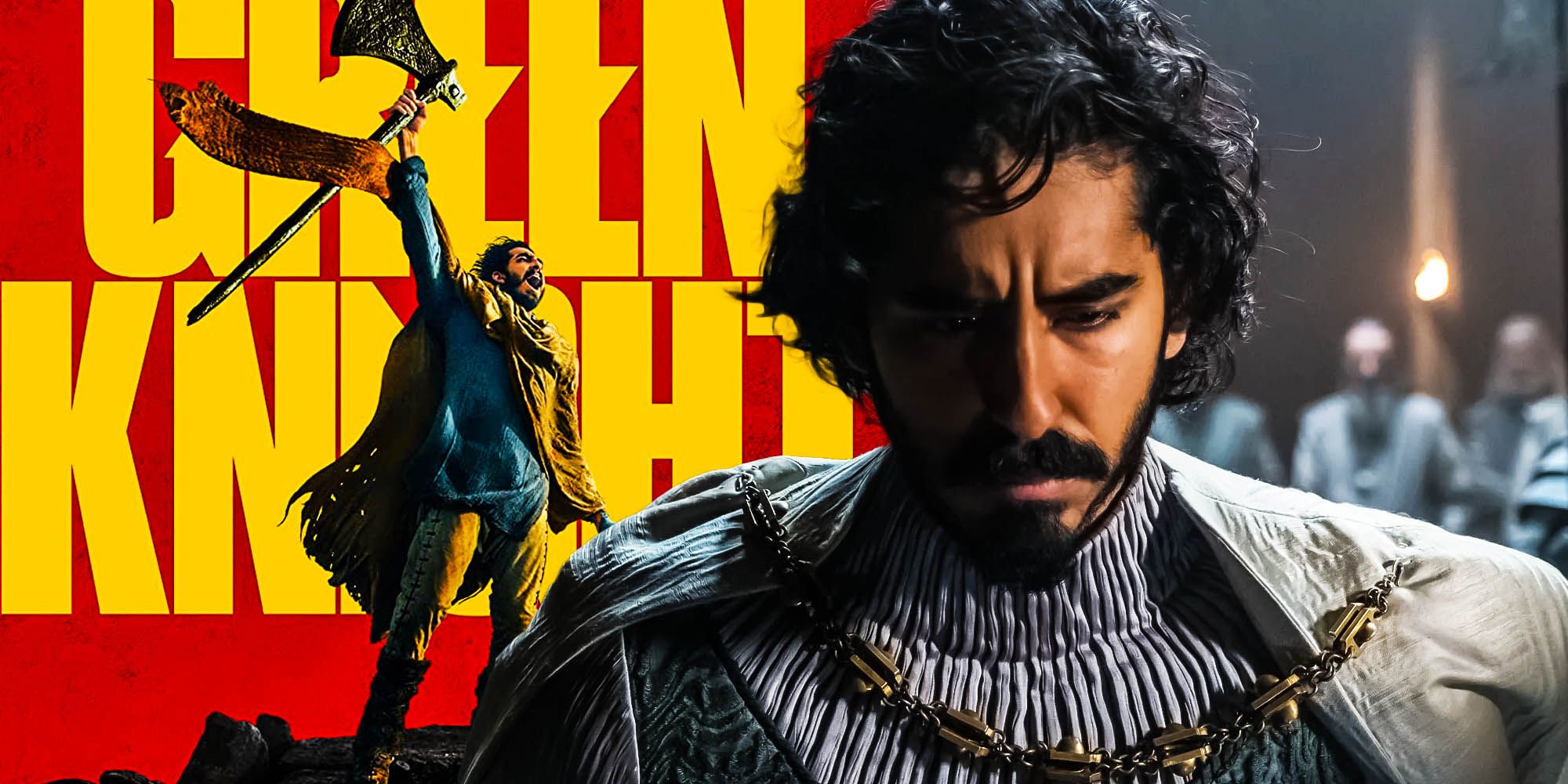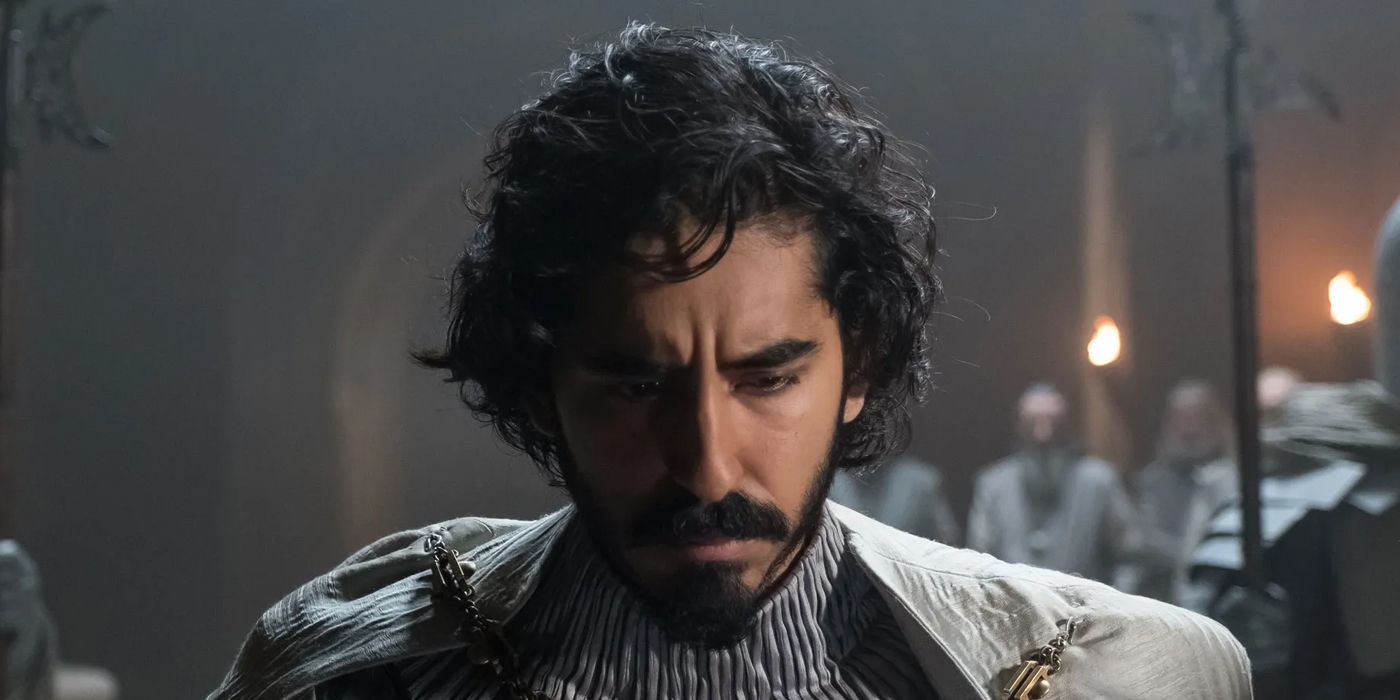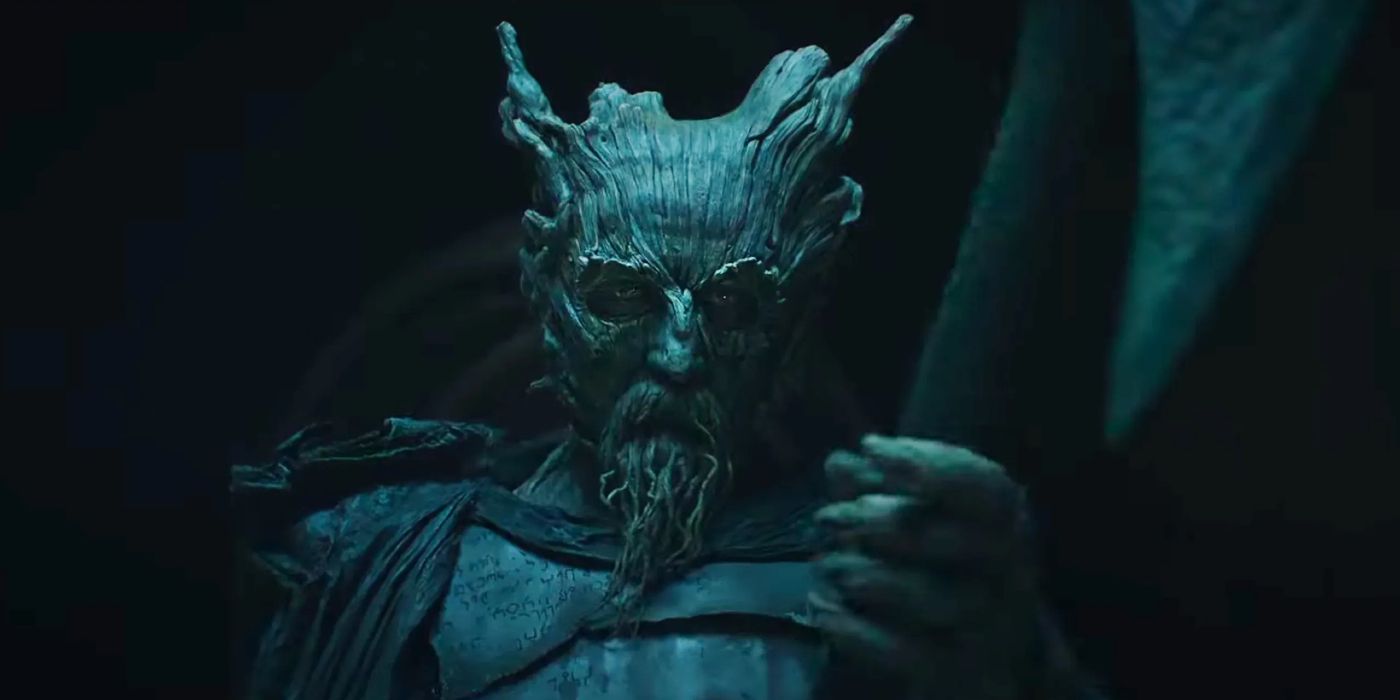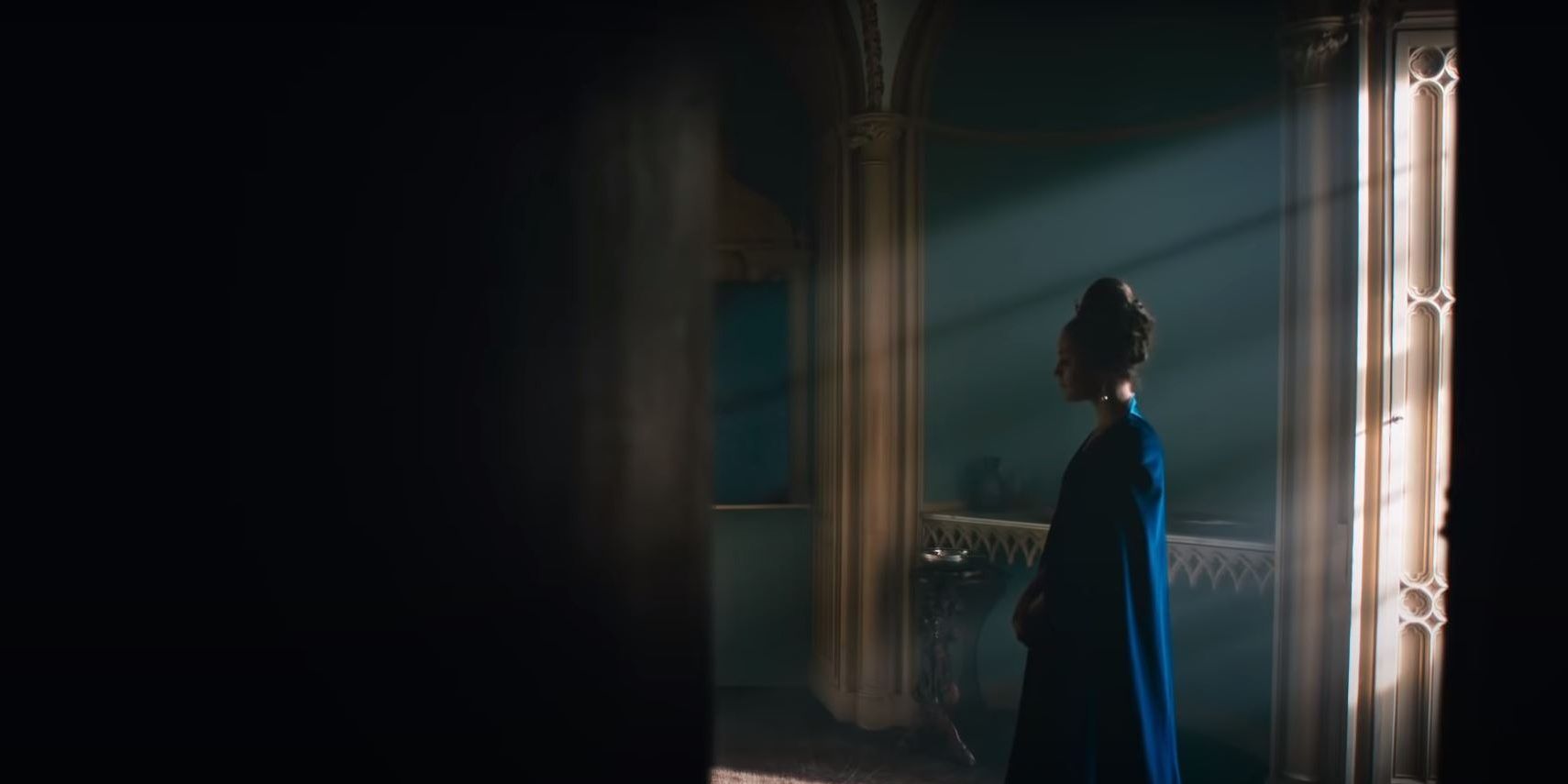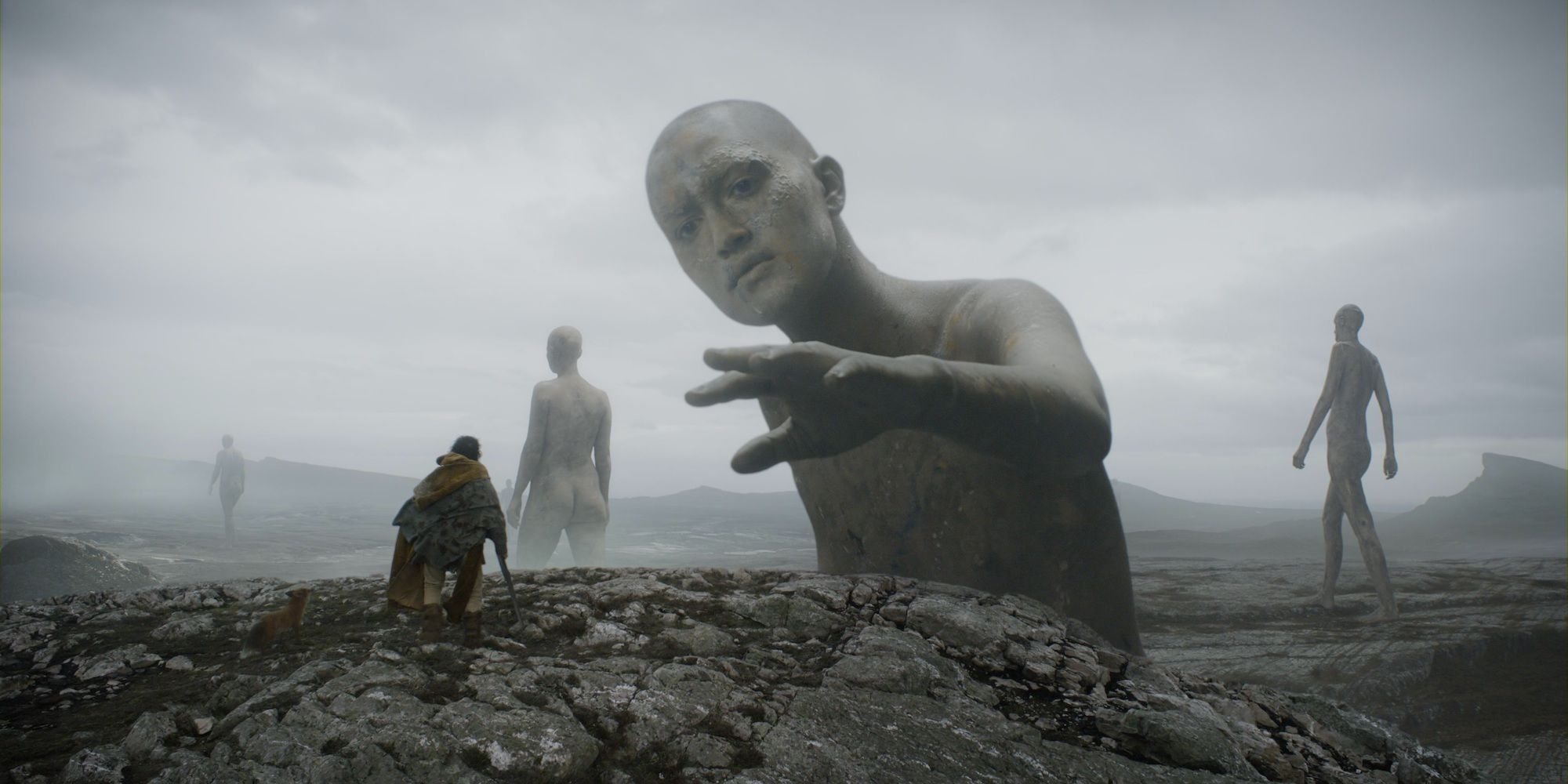David Lowery's 2021 Arthurian fantasy The Green Knight features an ambiguous ending where it's not immediately clear whether the protagonist Gawain lives or dies. By the rules of the challenge he has agreed to, Gawain must allow the Green Knight to behead him. However, the film cuts to a title card before the execution occurs, suggesting Gawain may have survived.
Based on a fourteenth-century poem, The Green Knight sees Gawain issued an unusual challenge on Christmas Day: to inflict any wound on the mysterious knight, and have the same injury returned to him one year later. When Gawain arrogantly beheads the green knight, he is horrified to see the figure pick up his own head and depart. A year later, Gawain must then go on a quest to find the knight once again, knowing that if he honors his agreement, it will mean the loss of his life.
A revisionist Arthurian fantasy movie, The Green Knight changes elements of the original chivalric romance while remaining true to the ways in which the medieval tale is strange and alien to modern audiences. The ultimate fate of Gawain is more ambiguous in the movie than in the original poem, with a flash-forward sequence adding to the confusion. Director David Lowery has stated that his original ending for the film would have clearly killed Gawain. However, the final ending better reflects the themes of the story.
The Green Knight Leaves Gawain's Fate Ambiguous
In the conclusion of The Green Knight, Gawain finally finds the Green Knight at a chapel in the wilderness. On the way, he has had a sexual encounter with a married lady in a strange castle, anachronistic among The Green Knight's carefully chosen locations. She leaves him with a girdle that he believes will protect him from death, a symbol that becomes highly relevant in the movie's conclusion. The Green Knight has three strokes with which to behead Gawain. On the first and second, he intentionally relents. What happens next is the source of the movie's ambiguity
Before the third stroke, Gawain has a vision in which he runs away and returns to Camelot. There, he sees a future where he becomes king, but is unhappy, witnessing his son die in battle and his people turn against him. The vision ends with Gawain removing the lady's girdle from his guts, causing his head to fall off -- a dream-like version of the punishment that the Green Knight has promised him. When Gawain awakens from his reverie, the Green Knight praises his bravery and mutters "Well then. Off with your head."
Rather than a climactic fight between Gawain and the Green Knight, the film ends with a kind of epiphany, where Gawain realizes the foolishness of his ambitions and behavior. It is unclear, however, whether the Green Knight actually goes through with his promise to behead Gawain. While "off with your head" could be a literal statement of his intentions, it could also refer to the death of Gawain's ego, the "head" which has gotten him in so much trouble. The original text lends support to this interpretation.
Does The Green Knight Kill Gawain In The Arthurian Legend?
The medieval poem upon which The Green Knight is based, "Sir Gawain and the Green Knight", features largely the same plot as the film. The movie does add things to the story but is largely faithful to its medieval themes. However, The Green Knight's biggest change to Arthurian legend comes in its ending, which is much more definitive in the original version.
In "Sir Gawain and the Green Knight", Gawain intentionally misses on his first two strikes, as in the movie. On the third, he nicks Sir Gawain, reflecting his sin of taking the lady's girdle and hiding it from her husband. In other words, the Knight judges Gawain and finds him mostly worthy, but with some flaws. He must then wear the girdle home as a mark of shame. It's not clear if the same could be said of Lowery's Gawain, who is clearly more ambitious and willing to go further in his lusts than the medieval original -- hence why the director originally considered a different ending.
The Green Knight's Alternate Ending Would've Killed Gawain
In an interview with Vanity Fair, Lowery expands on his intentions for the ending. His original intention was to change the original Green Knight story's ending by having Gawain be explicitly killed. As Lowery describes it, the purpose of the vision of Gawain's future was to show how being beheaded could be a happy ending, or at least a better alternative than what awaited him if he survived.
Lowery went as far as to shoot an alternate ending that depicted Gawain's beheading. However, he ultimately decided that it put "too sharp" a point on the movie and that it would be better to leave Gawain's fate open to the audience's interpretation, keeping the possibility of redemption open. To that point, the final minutes of The Green Knight both show Gawain's head coming off (during the vision) and Gawain being spared (during the Green Knight's first two swings.) This alternate ending doesn't mean, however, that Gawain definitely died after the movie's closing credits. As in other ambiguous endings like Total Recall, the lack of clarity has a clear thematic point.
The Real Meaning Of Green Knight Is Bigger Than Whether Or Not Gawain Dies
In both the medieval legend and the modern adaptation, the story of Gawain is meant to convey a message. This is consistent with medieval literature, which generally had a didactic purpose instead of encouraging emotional investment in characters. The original story is meant to emphasize the importance of chastity as a chivalrous virtue by showing a heroic figure's struggle to maintain it, although the strange way in which the narrative unfolds has made the text a subject of debate for centuries.
In Lowery's The Green Knight, the story is about how Gawain's ambition and callousness towards others poison his life. Even before his encounter with the Knight, Gawain is indifferent towards his lover Essel. It is his failings that cause his mother, Morgan LeFay, to summon the Green Knight in the first place. When Gawain accepts the Knight's challenge, it signals his arrogance, desire to impress Arthur, and belief that his actions will not have consequences.
Over the course of his journey towards the knight, Gawain is forced to reckon with his limitations, from his powerlessness before the giants to his inability to resist the Lady's advances. By revealing the garter to the knight, he shows that he is now aware of his problems, and has attained humility. Whether or not the Green Knight swings his axe the final time, it is clear that the old Gawain, the one whose future we have just foreseenin The Green Knight, is already dead.

